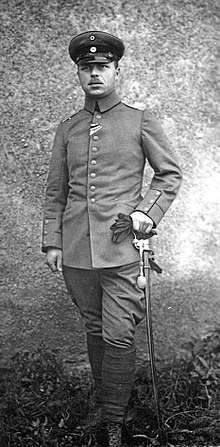Franz Dischinger
Franz Dischinger (8 October 1887 - 9 January 1953) was a pioneering German civil and structural engineer, responsible for the development of the modern cable-stayed bridge. He was also a pioneer of the use of prestressed concrete, patenting the technique of external prestressing (where the prestressing bars or tendons are not encased in the concrete) in 1934.[1]
Franz Dischinger | |
|---|---|
 Franz Dischinger |
After completing Gymnasium in Karlsruhe, Germany, Dischinger went to the Technical University in Karlsruhe where he studied and received a degree in building engineering. After getting his degree in 1913, he then started working for Dyckerhoff & Widmann A.G., an engineering firm in Germany. In 1928 Dischinger went back to school to receive his doctorate at the Technical School in Dresden, Germany.[2]
In 1922, he designed the Zeiss Planetarium[3] in Jena with Walther Bauersfeld, using a thin-shell concrete roof in the shape of a hemisphere. Their system was subsequently patented, and Dischinger published a paper on the relevant mathematics in 1928.[4]
Since the previous stay and cable bridges in Dischinger's opinion were both flawed technically and disturbing looking, he decided to publish his own cable stayed bridge.[5] This design has been used ever since, more than 100 of these cable stayed bridges have been built.
For the 1938 design of a rail suspension bridge (not built), he had studied historical bridges incorporating inclined stay elements, such as those by Ferdinand Arnodin and John Roebling. He went on to design the 183 m span Strömsund Bridge[6] in Sweden, completed in 1955 and generally considered the first of the modern tradition of cable-stayed bridges, although there had been many isolated examples of the bridge form before then. This employed a steel deck and cables, with large spacings between the stays typical of the early designs. It appears in Strömsund's coat of arms.[7]
Other key works include:
- Großmarkthalle, Basel, Switzerland, 1929 (dome roof)
- Market Hall, Leipzig, Germany, 1930 (polygonal dome roofs)
- Koblenz bridge, Germany, 1935 (three arch concrete bridge)
- Aue bridge, Germany, 1936
- Cologne Rodenkirchen Bridge, Cologne, Germany, 1954 (with others, including Fritz Leonhardt)
Notes
- Troyano, Leonardo Fernandez: "Bridge Engineering: A Global Perspective", Thomas Telford Publishing, 2003
- Karl Kordina: Deutsche Bauzeitung, 2005
- Zeiss Planetarium at Structurae
- Billington, David: "The Tower and the Bridge", Princeton University Press, 1983
- Billington,David; Nazmy, Aly: "History and Aesthetics of Cable-Stayed Bridges", Journal of Structural Engineering, ASCE Publications, 1990
- Strömsund Bridge at Structurae
- Troyano, op. cit.
External links
- Franz Dischinger at archINFORM
- Franz Dischinger at Structurae
- Cable-Stayed Bridges from ASCE journal library